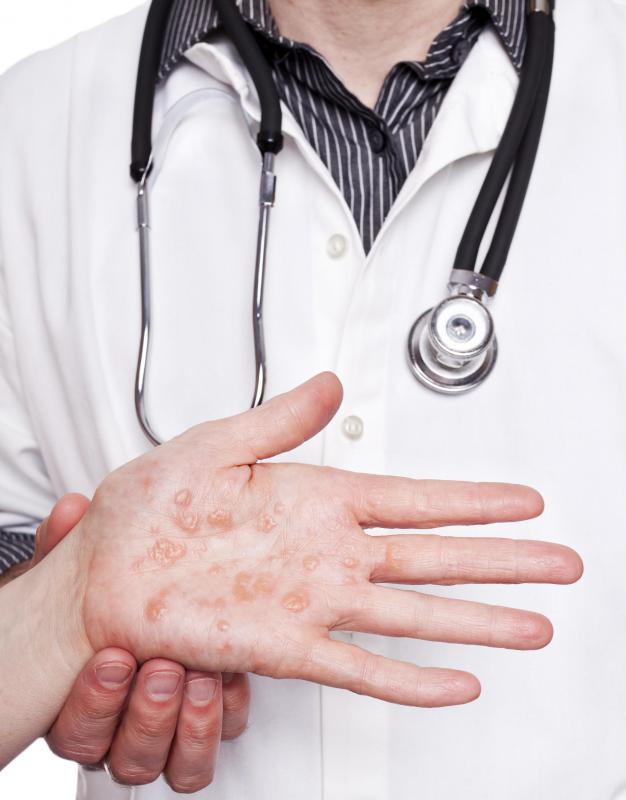At TheHealthBoard, we're committed to delivering accurate, trustworthy information. Our expert-authored content is rigorously fact-checked and sourced from credible authorities. Discover how we uphold the highest standards in providing you with reliable knowledge.
What is Dermatographic Urticaria?
Dermatographic urticaria, also known as dermatographism, is a type of skin disorder in which the skin is extremely sensitive to touch or pressure. This condition is often referred to as skin writing due to the development of a raised, itchy, red rash when the skin is touched or scratched. It is believed to be caused by some sort of allergic condition of the skin, although the possible allergens leading to this condition have not been identified. Treatment for dermatographic urticaria often involves the use of antihistamines, which are medications used to treat a variety of allergic conditions.
Hives are an itchy, red rash that is often raised and itchy. People who have dermatographic urticaria may develop hives any time that the skin is scratched, rubbed, or otherwise irritated. Other factors, such as temperature changes or stress, may lead to an outbreak of hives. This skin condition may affect anyone at any age. This condition may go away on its own after several years, it may reduce in intensity over time, or it may last a lifetime.

In many cases, symptoms of dermatographic urticaria will appear within a few minutes of the skin being stroked or gently scratched with an object such as a pen. These symptoms generally disappear without treatment within an hour or so. In other forms of this skin condition, symptoms may last for several hours. One such example is delayed pressure dermatographism, which may cause pain and a burning sensation which can last for several hours after pressure is applied to the skin.

Obtaining a diagnosis for this skin condition is a simple procedure. The doctor will stroke the skin with an object, such as a pen, and then check for the presence of a raised, red marks along the path taken by the pen, indicating a positive diagnosis for dermatographic urticaria. The diagnosis for delayed pressure dermatographism often involves the placement of an object, such as a heavy backpack, on the shoulders for a period of times and then checking the skin for symptoms.

Medical treatment is not always necessary for dermatographic urticaria. If the rash caused by this skin condition does not cause pain or itching, no treatment is indicated. Those who do experience symptoms are usually prescribed antihistamines for use whenever the symptoms appear. Cortisone creams may also help to relieve some of the itching. Babies and toddlers who are diagnosed with this condition are usually given antihistamines until they are old enough to communicate whether the symptoms are bothersome.
AS FEATURED ON:
AS FEATURED ON:
















Discussion Comments
@KoiwiGal - Well, I think hives treatments are pretty effective for it in most cases. Apparently it can manifest in pain and itching for some people when they have pressure put on their skin, like they might with bra straps or a backpack.
I am seriously grateful I don't have that, as I wear my backpack everywhere.
I guess you take everything for granted until it happens to you.
@Ana1234 - Yeah, from what I can tell, most people who have this use it to write quirky messages on their skin to post to the internet. I had a friend who had this and she mostly hardly noticed it and only really mentioned it at parties when people trot out their party tricks to try and impress everyone.
It sounds like it can be serious for some people though and it's a shame they don't seem to really understand how dermatographia works or why the skin reacts like that.
That must really be awful for parents of babies with this condition as you'd have no real way of knowing if it was benign or if it was causing discomfort or real pain to the child whenever it happened.
I know there have been lots of cases where a child just seemed really fussy or colicky and the parents had no idea until they grew old enough to talk that there was an untreated condition that was causing pain.
It does sound like this condition is usually pretty painless though.
Post your comments